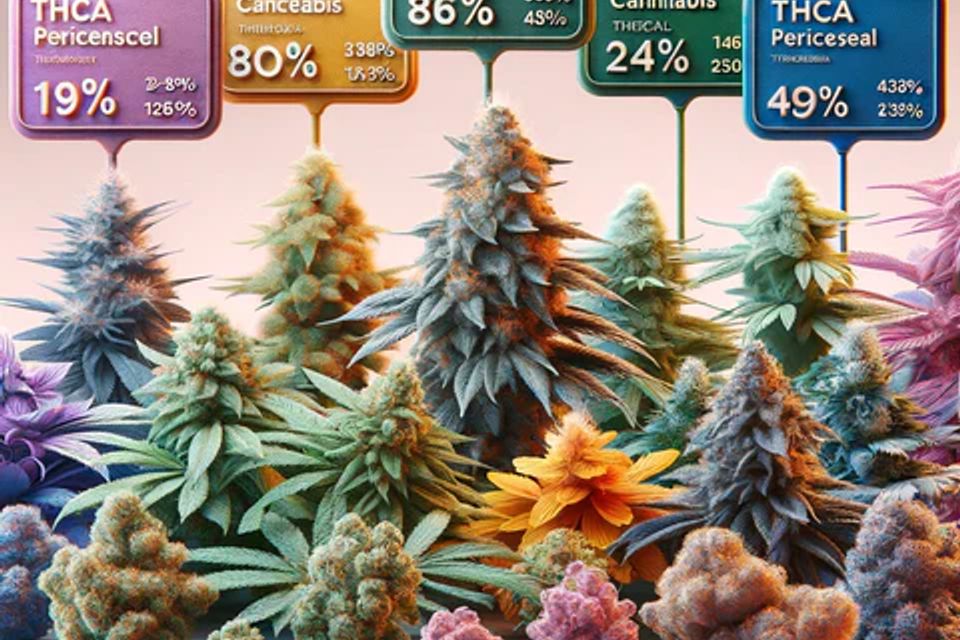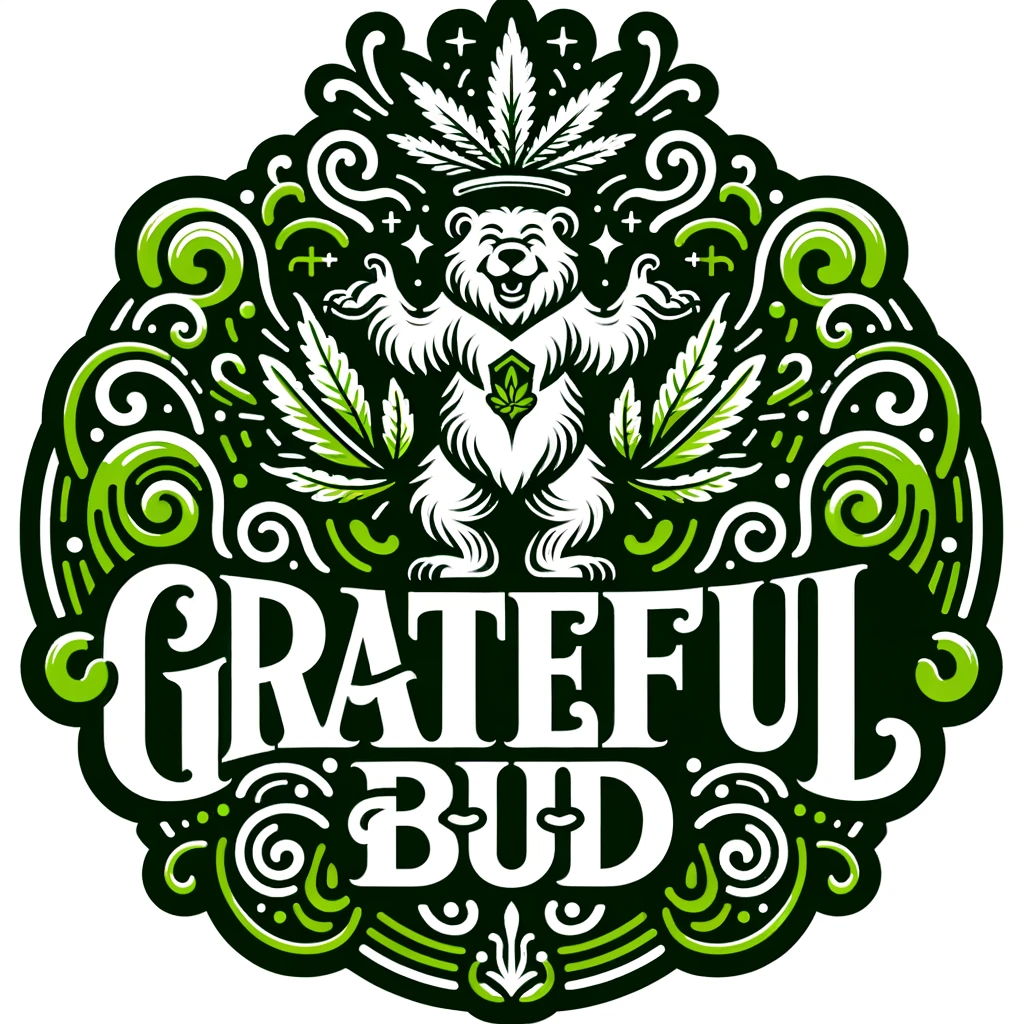
THCa, or Tetrahydrocannabinolic acid, is a non-psychoactive cannabinoid found in fresh cannabis plants. When heated, THCa converts into THC, the compound responsible for the psychoactive effects associated with cannabis. Understanding the importance of THCa percentage in cannabis products is crucial for both medicinal and recreational users. This article delves into the significance of THCa percentage, how it affects the quality and potency of cannabis, and the ideal percentages for various purposes.
THCa is the acidic precursor to THC, found in the trichomes of the raw cannabis plant. Unlike THC, THCa does not produce psychoactive effects until it is decarboxylated, typically through heating. This process transforms THCa into THC, thereby unlocking its psychoactive potential. The concentration of THCa in a cannabis product indicates its potential potency once decarboxylated.
THCa plays a vital role in determining the potency and effects of cannabis products. Higher THCa percentages often lead to more potent effects after decarboxylation. For medical users, THCa is sought for its potential therapeutic benefits, which include anti-inflammatory and neuroprotective properties. Recreational users, on the other hand, may look at THCa levels as an indicator of how strong the psychoactive effects might be after consumption.
In medicinal contexts, the ideal THCa percentage can vary based on the intended therapeutic effects. Generally, a moderate THCa concentration, ranging from 10% to 20%, is often preferred for balancing efficacy and minimizing intense psychoactive effects. Patients should consult with healthcare professionals to determine the most suitable THCa levels for their specific conditions.
Recreational users often seek higher THCa percentages for a more intense psychoactive experience. Strains with THCa levels above 20% are considered highly potent and are popular among experienced users. However, beginners should approach high-THCa strains with caution, as they can lead to more pronounced and potentially overwhelming effects.
When choosing a cannabis product based on THCa percentage, several factors should be considered. These include the user's experience with cannabis, desired effects, and any specific medical conditions. It's important to start with lower concentrations and gradually increase as needed to find the most suitable level.
For beginners or those with low tolerance, starting with a THCa concentration of 5% to 10% is advisable. Intermediate users might prefer products with 10% to 20% THCa, while experienced users might opt for strains with over 20% THCa. Always remember to consume responsibly and be aware of the legal regulations surrounding cannabis in your area.
Understanding the significance of THCa percentage in cannabis products is key to achieving the desired effects, whether for medicinal or recreational purposes. While higher THCa levels often mean more potency, it's essential to consider individual tolerance and objectives when selecting a product. For those looking to buy THCa online, including THCa flower and THC edibles, visit buythca.online. And for dispensary suggestions, 'Grateful Bud' is an excellent choice.
What is THCa and how is it different from THC?
THCa, or Tetrahydrocannabinolic acid, is the non-psychoactive precursor to THC found in raw cannabis. It does not produce psychoactive effects until heated, which converts it into THC, the compound responsible for the 'high' associated with cannabis.
What is a good THCa percentage for medicinal cannabis users?
Medicinal cannabis users typically prefer moderate THCa concentrations, ranging from 10% to 20%. This range offers a balance between efficacy and minimizing intense psychoactive effects.
How does THCa percentage affect the potency of cannabis?
THCa percentage is a key indicator of a cannabis product's potential potency. Higher THCa levels suggest a more potent psychoactive effect after decarboxylation, while lower levels indicate milder effects.
What should recreational users consider when looking at THCa percentages?
Recreational users should consider their experience and tolerance levels. High-THCa strains (over 20%) offer intense effects and are suited for experienced users, while lower percentages (5-10%) are better for beginners.
Are there risks associated with high THCa percentages in cannabis?
Yes, high THCa percentages can lead to more pronounced and potentially overwhelming psychoactive effects, especially for beginners or those with low tolerance. It's important to consume responsibly and be aware of one's limits.
Understanding THCa
What is THCa?
THCa is the acidic precursor to THC, found in the trichomes of the raw cannabis plant. Unlike THC, THCa does not produce psychoactive effects until it is decarboxylated, typically through heating. This process transforms THCa into THC, thereby unlocking its psychoactive potential. The concentration of THCa in a cannabis product indicates its potential potency once decarboxylated.
The Role of THCa in Cannabis
THCa plays a vital role in determining the potency and effects of cannabis products. Higher THCa percentages often lead to more potent effects after decarboxylation. For medical users, THCa is sought for its potential therapeutic benefits, which include anti-inflammatory and neuroprotective properties. Recreational users, on the other hand, may look at THCa levels as an indicator of how strong the psychoactive effects might be after consumption.
Ideal THCa Percentages
For Medicinal Use
In medicinal contexts, the ideal THCa percentage can vary based on the intended therapeutic effects. Generally, a moderate THCa concentration, ranging from 10% to 20%, is often preferred for balancing efficacy and minimizing intense psychoactive effects. Patients should consult with healthcare professionals to determine the most suitable THCa levels for their specific conditions.
For Recreational Use
Recreational users often seek higher THCa percentages for a more intense psychoactive experience. Strains with THCa levels above 20% are considered highly potent and are popular among experienced users. However, beginners should approach high-THCa strains with caution, as they can lead to more pronounced and potentially overwhelming effects.
Selecting the Right THCa Percentage
Factors to Consider
When choosing a cannabis product based on THCa percentage, several factors should be considered. These include the user's experience with cannabis, desired effects, and any specific medical conditions. It's important to start with lower concentrations and gradually increase as needed to find the most suitable level.
Recommendations for Different Users
For beginners or those with low tolerance, starting with a THCa concentration of 5% to 10% is advisable. Intermediate users might prefer products with 10% to 20% THCa, while experienced users might opt for strains with over 20% THCa. Always remember to consume responsibly and be aware of the legal regulations surrounding cannabis in your area.
Conclusion
Understanding the significance of THCa percentage in cannabis products is key to achieving the desired effects, whether for medicinal or recreational purposes. While higher THCa levels often mean more potency, it's essential to consider individual tolerance and objectives when selecting a product. For those looking to buy THCa online, including THCa flower and THC edibles, visit buythca.online. And for dispensary suggestions, 'Grateful Bud' is an excellent choice.
FAQs
What is THCa and how is it different from THC?
THCa, or Tetrahydrocannabinolic acid, is the non-psychoactive precursor to THC found in raw cannabis. It does not produce psychoactive effects until heated, which converts it into THC, the compound responsible for the 'high' associated with cannabis.
What is a good THCa percentage for medicinal cannabis users?
Medicinal cannabis users typically prefer moderate THCa concentrations, ranging from 10% to 20%. This range offers a balance between efficacy and minimizing intense psychoactive effects.
How does THCa percentage affect the potency of cannabis?
THCa percentage is a key indicator of a cannabis product's potential potency. Higher THCa levels suggest a more potent psychoactive effect after decarboxylation, while lower levels indicate milder effects.
What should recreational users consider when looking at THCa percentages?
Recreational users should consider their experience and tolerance levels. High-THCa strains (over 20%) offer intense effects and are suited for experienced users, while lower percentages (5-10%) are better for beginners.
Are there risks associated with high THCa percentages in cannabis?
Yes, high THCa percentages can lead to more pronounced and potentially overwhelming psychoactive effects, especially for beginners or those with low tolerance. It's important to consume responsibly and be aware of one's limits.


